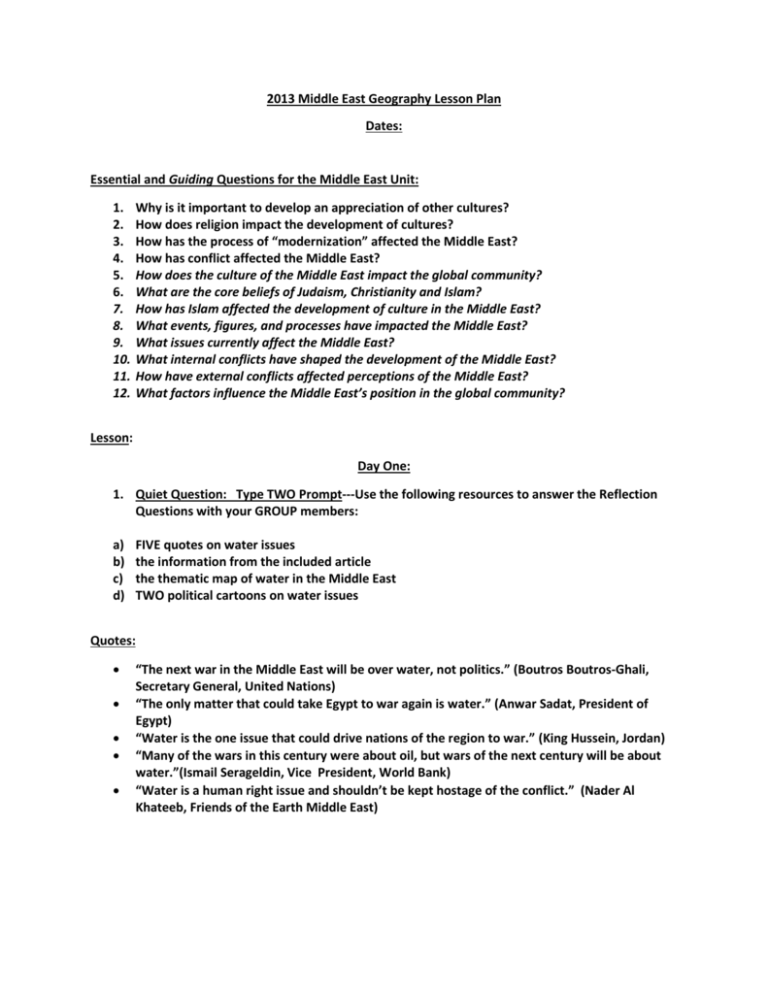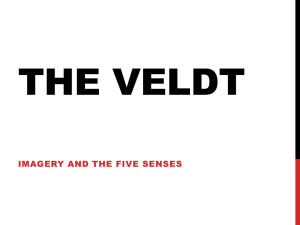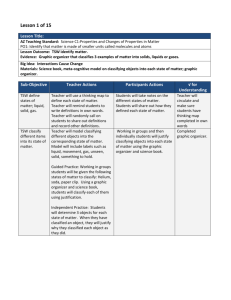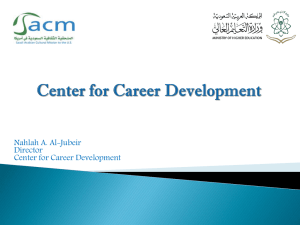2013 Middle East Geography Lesson Plan Dates: Essential and
advertisement

2013 Middle East Geography Lesson Plan Dates: Essential and Guiding Questions for the Middle East Unit: 1. 2. 3. 4. 5. 6. 7. 8. 9. 10. 11. 12. Why is it important to develop an appreciation of other cultures? How does religion impact the development of cultures? How has the process of “modernization” affected the Middle East? How has conflict affected the Middle East? How does the culture of the Middle East impact the global community? What are the core beliefs of Judaism, Christianity and Islam? How has Islam affected the development of culture in the Middle East? What events, figures, and processes have impacted the Middle East? What issues currently affect the Middle East? What internal conflicts have shaped the development of the Middle East? How have external conflicts affected perceptions of the Middle East? What factors influence the Middle East’s position in the global community? Lesson: Day One: 1. Quiet Question: Type TWO Prompt---Use the following resources to answer the Reflection Questions with your GROUP members: a) b) c) d) FIVE quotes on water issues the information from the included article the thematic map of water in the Middle East TWO political cartoons on water issues Quotes: “The next war in the Middle East will be over water, not politics.” (Boutros Boutros-Ghali, Secretary General, United Nations) “The only matter that could take Egypt to war again is water.” (Anwar Sadat, President of Egypt) “Water is the one issue that could drive nations of the region to war.” (King Hussein, Jordan) “Many of the wars in this century were about oil, but wars of the next century will be about water.”(Ismail Serageldin, Vice President, World Bank) “Water is a human right issue and shouldn’t be kept hostage of the conflict.” (Nader Al Khateeb, Friends of the Earth Middle East) Article: “Will Water Shortages Unleash Instability in the Middle East?” Mina Akrami FEB 20, 2013 A NASA study, released last Friday, indicates that water shortages could affect millions in the Middle East. Images, captured by NASA’s twin Gravity Recovery and Climate Experiment (GRACE) satellites, reveal significant water loss, in a period of six years, in the Tigris and Euphrates river basins—a region that includes parts of Turkey, Syria, Iraq, and Iran. The study has focused attention on the Middle East’s water woes and the possible instability it could unleash in the region. The rise and fall in water reserves alters the Earth’s mass, which influences local gravitational attraction. GRACE measures gravity, and thereby, tells how much a region’s water reserves change over time. “GRACE data show an alarming rate of decrease in total water storage in the Tigris and Euphrates river basins, which currently have the second fastest rate of groundwater storage loss on Earth, after India,” says Jay Famiglietti, the principal investigator of the study from the University of California, Irvine, quoted by NASA. According to the study, the majority of the water lost — approximately 73 million acre feet — was caused by reductions in groundwater. Famiglietti also said that irrigators turn to groundwater when drought reduces surface water. The Iraqi government drilled about 1,000 wells in response to the 2007 drought. According to a 2012 Yale study, the drought stunted agriculture in the Tigris and Euphrates river basins, causing thousands of people to flee Iran, eastern Syria, and northern Iraq. The NASA study shows just one part of the water crisis that the Middle East is undergoing. A study conducted by Maplecroft finds that of the top 20 countries suffering extreme or high water stress, 19 are in the Middle East and North Africa (MENA) region. Unsustainable water extraction and consumption Rich and poor Middle Eastern countries have exhausted groundwater supplies in their quest for selfsufficiency when it comes to food security. This was part of a “green revolution” that began in the 1970s. Often cited as an example of unsustainable water extraction and consumption practices in the Middle East, Saudi Arabia has provided farmers virtually free electricity to pump ground water to the surface in its quest for food-security. Because of the water loss caused by these practices, the Saudi government plans to cease wheat production by 2016. In Yemen, where irrigated land tripled between 1970 and 2000, the capital, Sana’a, has come under severe water stress. A 2010 report by the Mckinsey Institute forecasts that if water consumption in the Sana’a basin is not controlled, the city could run out of water by 2020. A few oil-rich Arab countries are beginning to address water loss caused by groundwater extraction. Some of these countries have focused on desalination, a process that makes saline (salt) water into fresh water. According to a report by the Guardian, more than 1,500 plants line the Gulf and Mediterranean, providing most of the MENA region’s drinking water by separating salts and impurities from the water. However, the impurities extracted from the water end back in the sea, threatening marine life, which in turn affects fishing. According to the Centre for Strategic and International Studies, Saudi Arabia and the United Arab Emirates spend $3 billion every year on desalination. Political implications of water shortages Aside from the impact on the environment, water loss is problematic for the already unstable region as the demand for water continues to rise alongside population growth. According to the US Intelligence Community Assessment of Global Water Security, by 2030, the world’s water needs will exceed current sustainable water supplies by 40 percent, which could generate widespread instability and contribute to state failure in certain regions, including in the Middle East. Another report by the Center for Strategic and International Studies (CSIS) states: “the real wild card for political and social unrest in the Middle East over the next 20 years is not war, terrorism, or revolution — it is water. Conventional security threats dominate public debate and government…water is the true gamechanger in Middle Eastern politics.” According to the report, water is a fundamental part of the social contract in Middle Eastern countries: governments rely on subsidized food and fuel, and cheap or free water to avoid dissent. While water has played a limited role in prompting unrest, permanent water loss will change water’s role in potential internal conflicts. Water shortages, according to some analysts, could also lead to international conflicts as governments act to ensure access to drinking water. Peter H. Brooks, writing for Foreign Policy, notes that more than anywhere else, the Tigris and Euphrates river basins — already affected by border disputes, conflicts over Kurdish autonomy, and the conflict in Syria — could become prone to transboundary water disputes. While launching the Blue Peace: Rethinking Middle East Water report in February 2011, Swiss foreign minister Micheline Calmy-Rey said: “In the future the main geopolitical resource in the Middle East will be water rather than oil." Calmy-Rey’s views are also shared by many in policy circles. However, Jon Alterman and Michael Dziuban of CSIS argue that while a large portion of the literature points to a relationship between water and conflict, in reality, several Middle Eastern countries have cooperated over water. For instance, in 1994 Jordan and Israel reached an agreement over the Jordan River and Turkey, Syria and Iraq have kept their water tensions manageable. Alterman and Dziuban believe that conflicts will instead be domestic. Land grabbing One response to water shortages has been to shift farming to Africa, an initiative led by the MENA countries along with China and South Korea. In Gambella, Ethiopia, to where Saudi Arabia has shifted much of its farming, there have been signs of unrest. In 2009, the Saudi Star Agricultural Development company signed leases for approximately 25,000 acres of land in Gambella, where it planned to produce rice for the Saudi market. In April 2012, five Saudi Star workers were killed in the company’s residential camp. To find the instigators, government soldiers searched local villages, torturing men and raping women. Moreover, Human Rights Watch reports that a policy of “villagization” enforced by the Ethiopian government for commercial land use has resulted in threats, intimidation, and violence against those who resist resettlement. Through villagization, scattered farming communities are grouped into small villages to promote rational land use, conserve resources, strengthen security, and provide access to clean water, health and education and infrastructure. However, the history of villagization in Ethiopia, as relayed in a Human Rights Watch report, illustrates a contrast to this rationale. The report notes that in the 1980s, these villages were often a source of forced labour for government projects, such as road construction, agricultural production, and other infrastructure development. Further, the report claims that villagization has involved and still involves human rights violations: government forces implementing and overseeing villagization burned property and committed theft, rape, torture and extrajudicial executions. Human Rights Watch claims that Saudi Star’s current land investment in Gambella has the potential to undermine the food security of the poor indigenous population. Currently, there are no limits on water use, which may have a significant negative impact on the local environment and on future agriculture practices. The Ethiopian government and Saudi Star present a different side of the issue. According to a May 2012 Bloomberg report, the Ethiopian government says resettlement has been voluntary and unrelated to the Saudi Star agriculture investment. The report also notes that to overcome local opposition, Saudi Star plans to offer jobs and training to the locals. It is unclear whether agriculture companies such as Saudi Star will employ more sustainable water practices in Africa and allow the locals to reap potential benefits of their agriculture investment. It is also unclear the extent to which these agriculture companies’ pursuit of water will create tension between the locals, the governments, and these foreign companies. Thus, as the Middle Eastern countries continue to seek ways to address water shortages at home and in Africa, only time will tell how important a role water will play in unleashing instability in the region and beyond. http://www.theinternational.org/articles/347-will-water-shortages-unleash-instability Reflection Questions: A. How is water as or more precious than oil? Give examples of situations where this could be the case. B. Why actions have been taken due to the water shortages in the Middle East? What are the effects of these actions? C. Where do you think wars would break out over water rights? Why? 2. Class: Have groups share their responses to the Group Reflection Question. Transition into the Geography of the Middle East. 3. Class: Ms. Barben is going to begin her Geography of the Middle East Powerpoint Presentation, and you should be taking notes in the provided graphic organizer. a) Descriptions/Key Characteristics: This information addresses the overview and general summary of that geographic aspect. b) Examples: This information addresses specific examples with details of that geographic aspect. c) Impact/Effects: This information addresses the effects or importance of the geographic features and examples on the region. d) Visual: A picture from the powerpoint or an image drawn by you to help remember the content. 4. Homework: Begin to label and color the political map and physical map of the Middle East. a) b) c) d) e) Use the specified colors indicated in the directions. Be sure to follow the capitalization directions. Cross off things as they have been labeled. Can also use the internet to help you label. Can also use the maps in Ms. Barben’s Powerpoints uploaded on her TeacherPage to help you label. Resources: Textbook Pages: Reference Atlas: pages A3, A5, A14, A15, A16, A18 Rand McNally Classroom Atlas (Blue): pages 9, 11, 74, 75, 80, 81, 84, 85, 86, 87 Hammond The New Comparative World Atlas (Green and Brown): pages 13, 48, 49, 52, 64, 65, 68, 69 The Nystrom Desk Atlas (Blues): pages 9, 11, 106, 107, 114, 115, 117, 118, 120 The Nystrom Desk Atlas (Reds): pages 9, 11, 106, 107, 114, 115, 117, 118, 120 Chunking: Night One: Label and color-code the cities and countries on the political map. Night Two: Label and color-code the bodies of water and deserts on the physical map. Night Three: Label and color-code the mountains on the physical map. Double-check, edit, and make any corrections on both maps. Day Two: 5. Class: Ms. Barben is going to continue her Middle East Geography Powerpoint and you should continue to complete the graphic organizer. 6. Homework: Label and color-code the maps of the Middle East. Day Three: 7. Class: Ms. Barben is going to continue her Middle East Geography Powerpoint and you should continue to complete the graphic organizer. 8. Homework: Finish labeling and color-coding the maps of the Middle East. Day Four: 9. Class: Ms. Barben is going to finish her Middle East Geography Powerpoint and you should finish taking notes in the graphic organizer. 10. Groups: You will be broken up into small groups to complete a Summative Assessment on Water Scarcity Issues in the Middle East. Materials to be Used: Sections of the Water Issues Powerpoint on YOUR TOPIC Sections of the Water Wars of the Middle East Supplemental Reading on YOUR TOPIC Tasks: In your small groups, you will be examining the two sides of the specific water conflict in the Middle East and breakdown the major arguments and evidence for both sides in the provided graphic organizer. To do this, the sections of the Water Issues Powerpoint and sections of the Water Wars of the Middle East Supplemental Reading that apply need to be broken up and assigned to the different groups members to read and take notes on. Then each group member will present their information to the group and the group members will add to their notes in the graphic organizer. Then after examining both sides of the issues, your group will act as an United Nations Peacekeeping Group and make a final decision on the conflict and what steps should be taken. Water Conflicts Areas: A. B. C. D. Jordan River Basin---Jordan and Israel Tigris-Euphrates Basin----Turkey and Syria West Bank Aquifers---Israel and Palestinians Gaza Strip---Israel and Palestinians 11. Rest of Class/Homework: Finish reading and taking notes in for your assigned sections. Need this completed for tomorrow’s activity. Day Five: 12. Groups: Break into your groups and have each group member present the information they found and add to graphic organizer. Then make the final evaluation as the UN representatives on the issue. This should be recorded on the oaktag poster board. This is due at the end of the class. 13. Homework: Work on Geography Study Guide Questions.








